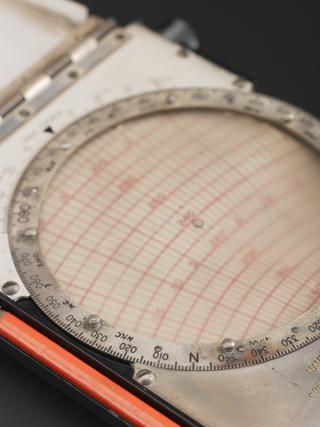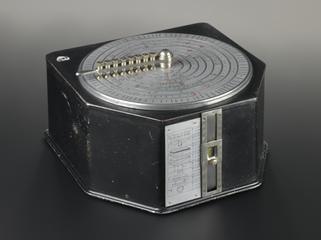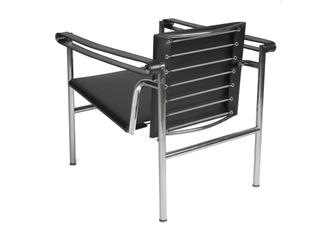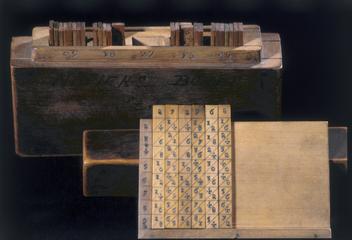
Napier's bones
- inventor:
- John Napier



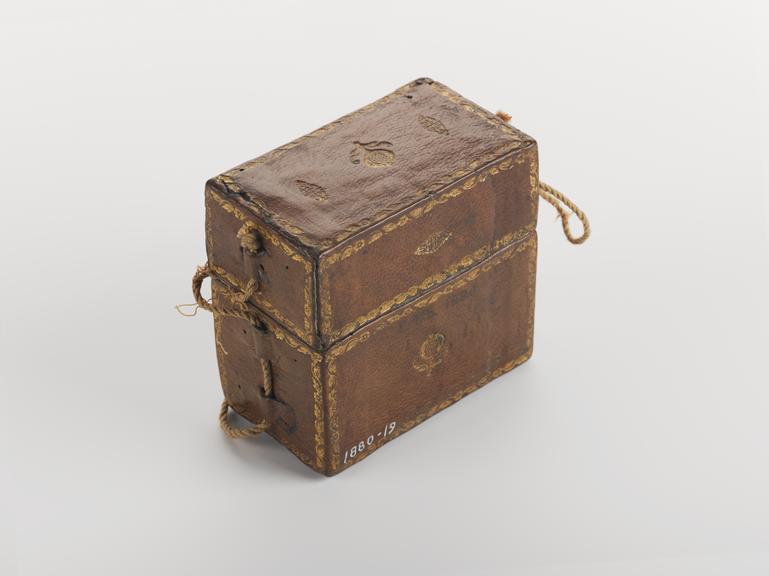


Napier's bones, brass, eleven pieces, in gold stamped leather case, with a short manuscript description in the case
Napier's bones in brass, 17th century. John Napier (1550-1617), inventor of logarithms, also created this popular calculating tool known as Napier's cylindrical 'rods' or 'bones'. Napier's rods reduced muliplication to a sequence of simple additions and could also be used for division and to calculate square roots. This example dates from the 17th century and consists of ten brass square section rods in a gold stamped leather case with short manuscript details, in Italian, for using the rods.
Details
- Category:
- Mathematics
- Object Number:
- 1880-19
- Materials:
- brass (copper, zinc alloy), leather, string, wood (unidentified) and paper (fibre product)
- Measurements:
-
overall (closed): 75 mm x 75 mm x 45 mm, .39 kg
- type:
- napier's bones
- credit:
- Fulgence, Mons. (Paris)
